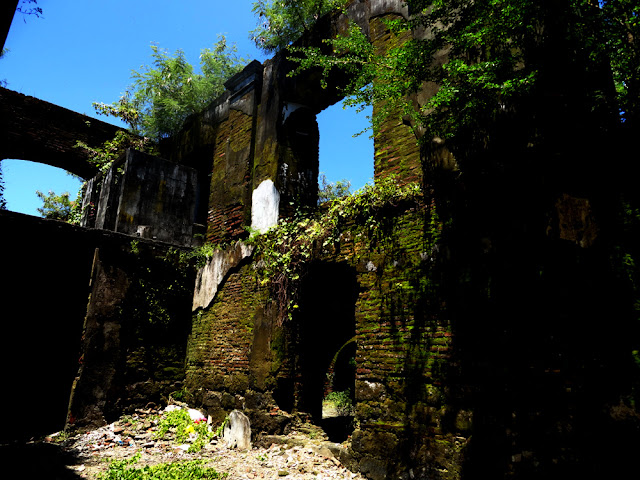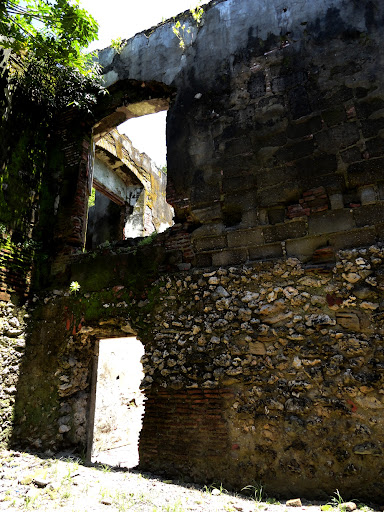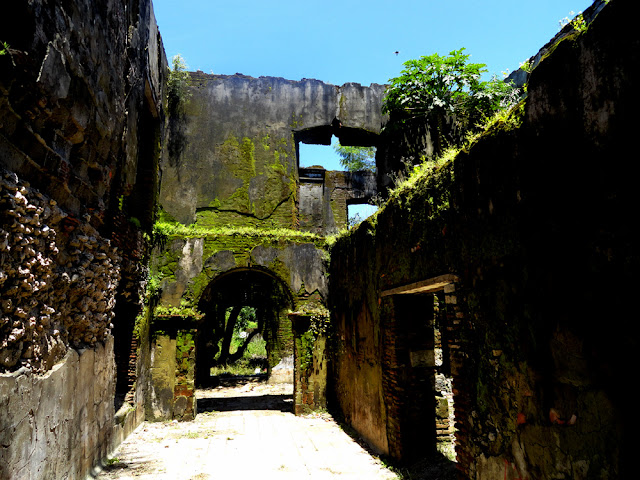
Nature has begun to reclaim the insides of this old ruin
Coming from the euphoria of seeing the heritage treasure that is Paoay Church, I crashed into a sad state of realization seeing the old convent, lying in decay just across the church. Potentially another historical gem, I thought, only if we could just find a way to restore it or maybe find some useful means to showcase it for educational purpose, just like what other people do with their centuries old buildings. I really don’t know much about the history of this building aside from that it was the old residence of the missionary fathers. Chances are that this building was used for other different functions, as it was common for such buildings to take on new roles as time goes by. Most of these convent were made schools by the seculars during the early 1900’s. The rudiments of education, essentially religious of course, had been given to the early natives of the area from this building. This event alone merits its preservation.
It was strange walking around the ruins, thinking that people lived and died in what was once a wonderful building – what were their memories of this place? I have these qustions in my head, wondering, do we have an obligation to take care of these old buildings and preserve them? What if I’m non-Catholic and I see these relics as nothing more but remnants of a past that I resent? Do I have to support the restoration of such things?
In a time when bashing the religion is the flavor of the month, I could only see the support to conserve old churches and her structures to diminish. Not to put the blame on anyone who does not believe in the church, the local hierarchy has its share of failures in protecting these wonderful buildings. There’s what appear to be a movement to do away with conservation, instead, build new constructs, everything must be new, the old uprooted – the only justification is that this method is the practical way to do things.
We went through different stages in our culture and tradition of building structures, it begun with the temporary shelter (with the kubo). Then came the shift to permanence (with the balay na bato and the stone churches) and now, the disposable (plastic, glass and metal). It’s sad to think that we are reverting back to the beginning, a mentality that is concerned only with the present, not the future – only difference now is that we’re using different (recyclable) materials, but exacting more from our environment.
The great things our forebears accomplished in the past; the buildings, stone houses, literature, paintings, sculptures, advances in science, quality of life, all of these are the realization of their imagination of who they are. Joaquin is right that when they built their bahay na bato it was their way of saying this is us now. We only need to look back and compare what they have then and what we have now to understand what we’ve become – offshoots from the original Filipino.

The facade with windows adorned with Catholic symbols

It appears that the facade has been reinforced as there were quite a few parts that had been cemented with concrete

Coral stones and red bricks

What was once a hall way



October 3rd, 2012 at 6:38 pm
When I die I will ask the Light to let me see Hispanic Philippines and what these buildings looked like, the people, how they lived, how they talked, dressed, ate, everything. 😉
October 4th, 2012 at 8:11 pm
@Tia-I believe we can experience these things even when we’re here alive. We can’t live on it but at the very least sense it. Life is energy, in all forms, these are left behind even after the physical body is gone. We can feel these vibrations, only if we open our minds that it’s a possibility.